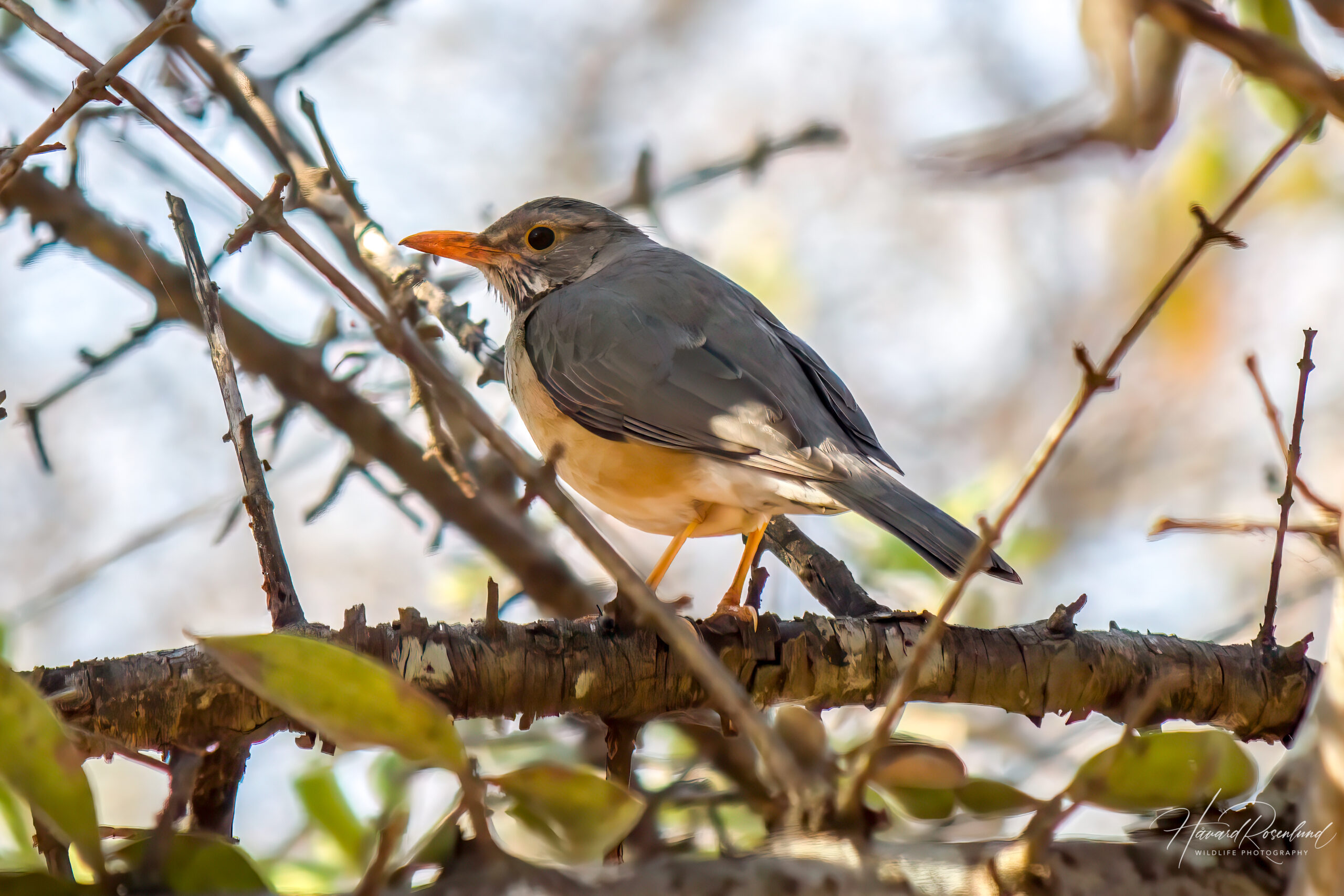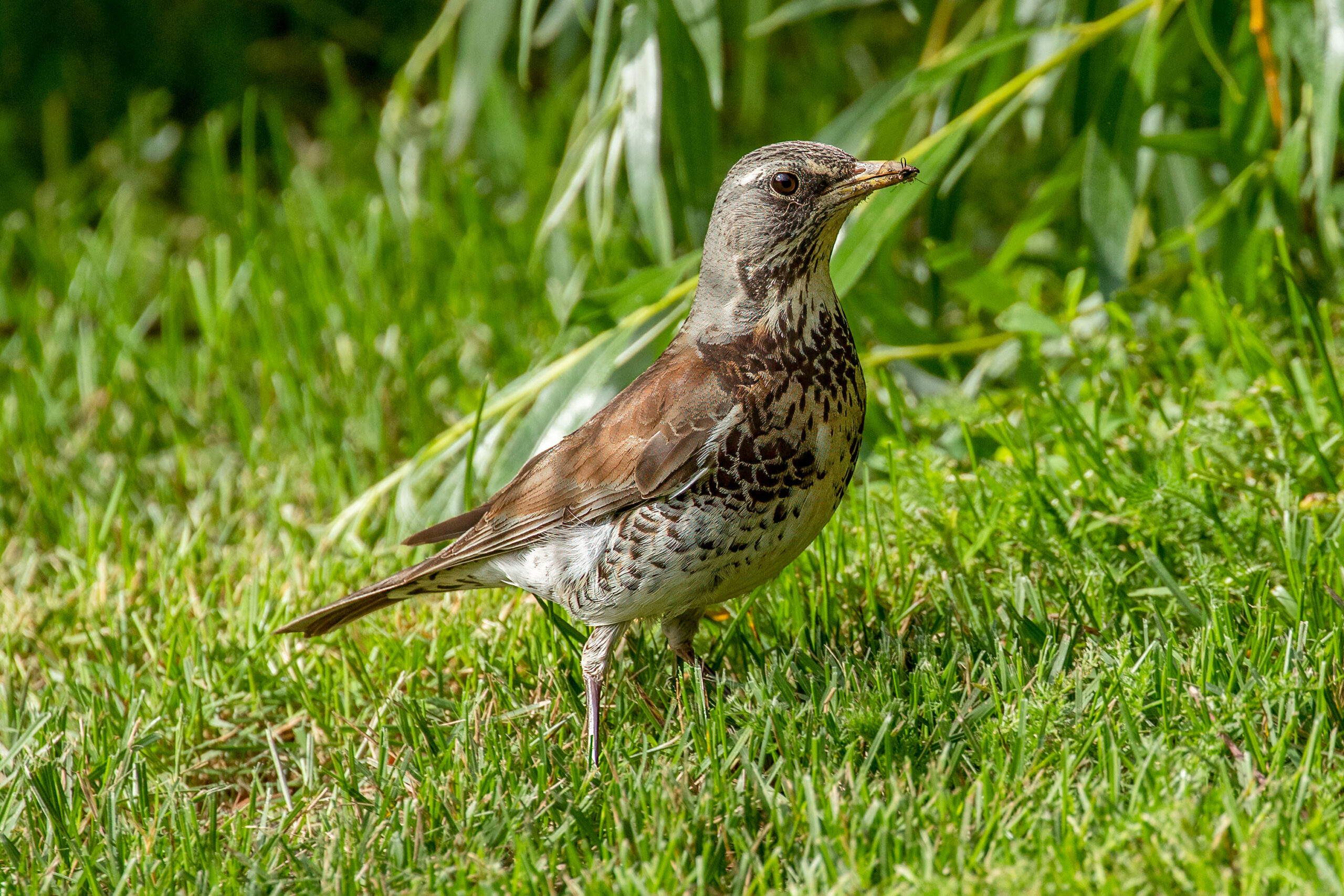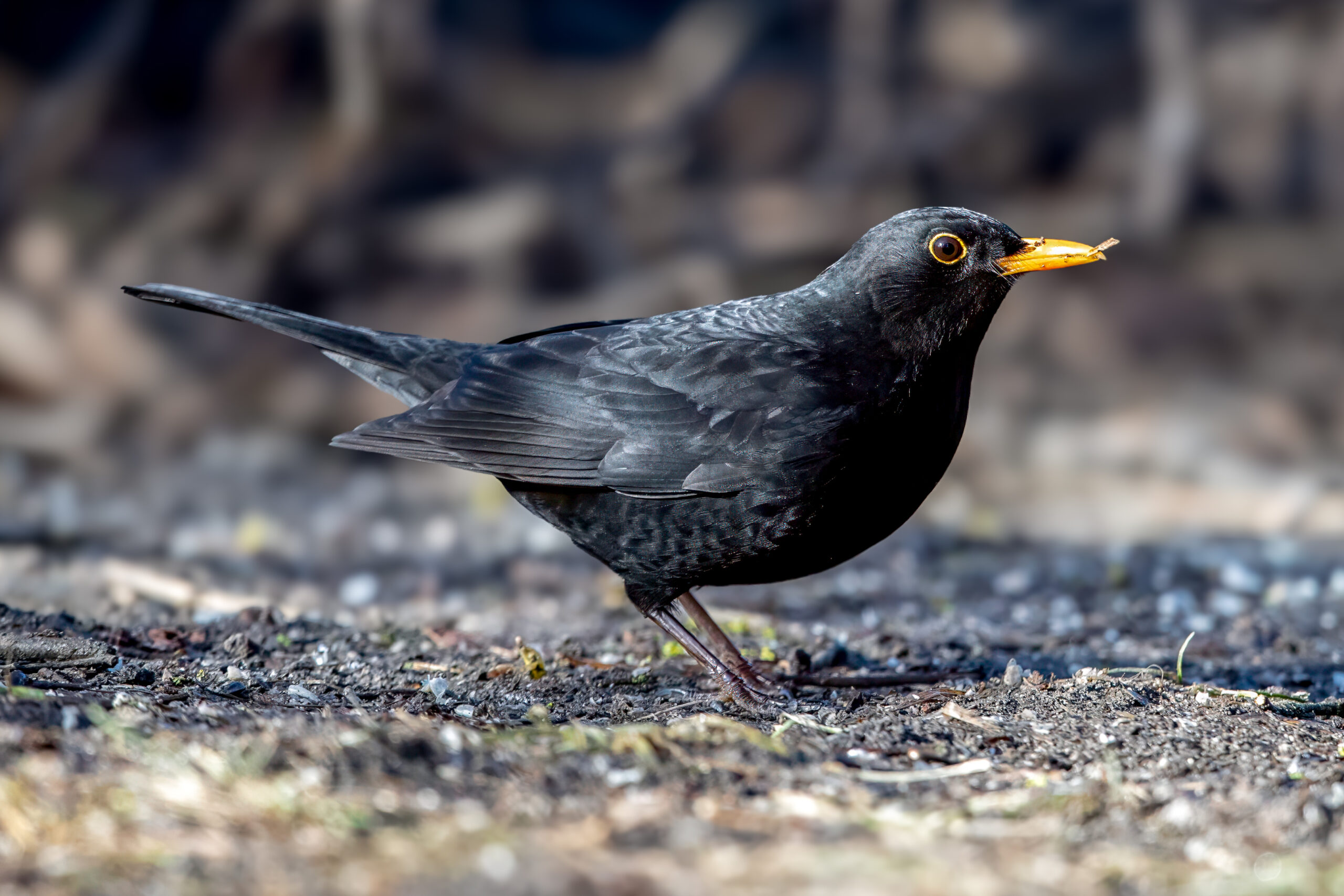Description
The Kurrichane thrush (Turdus libonyana) is a bird species notable for its melodious song and distinctive appearance. Its range extends across south-central and southeastern Africa. The name “Kurrichane” comes from a mispronunciation of the former town Kaditshwene in South Africa, where the species was first described. This thrush typically measures around 21 to 23 centimeters (8.3–9.1 inches) in length. It is characterized by its olive-brown upperparts and orange-brown underparts, with a distinctive yellow ring around its eyes and a yellow bill. These color combinations sets it apart from other thrushes. The song is melodious, varied, and bears some similarities to other thrushes. It is often heard at dawn and dusk.
Diet & habitat
This thrush predominantly inhabits woodland areas, thickets, and gardens. It is also commonly found in savannas and riverine forests, adapting well to both wild and urban environments. The Kurrichane thrush is omnivorous, feeding on a variety of fruits, insects, and other small invertebrates. It forages on the ground, often turning over leaf litter to uncover hidden food sources.
Nesting
The breeding season for the Kurrichane thrush typically occurs during the wet season, though this can vary by region. This species is somewhat territorial, particularly during the breeding season, when males can be seen defending their nesting area vigorously. The nests are cup-shaped, and often constructed in the fork of a tree or shrub. The female usually lays 2 to 3 eggs, which are incubated for about 14 days. Both parents participate in feeding and nurturing the young. The fledglings leave the nest approximately 15 days after hatching but remain dependent on their parents for a while longer.
Status
The Kurrichane thrush benefits from its adaptability to various habitats, including urban areas, which has helped maintain stable population levels. It is listed as least concern on the IUCN Red List.







